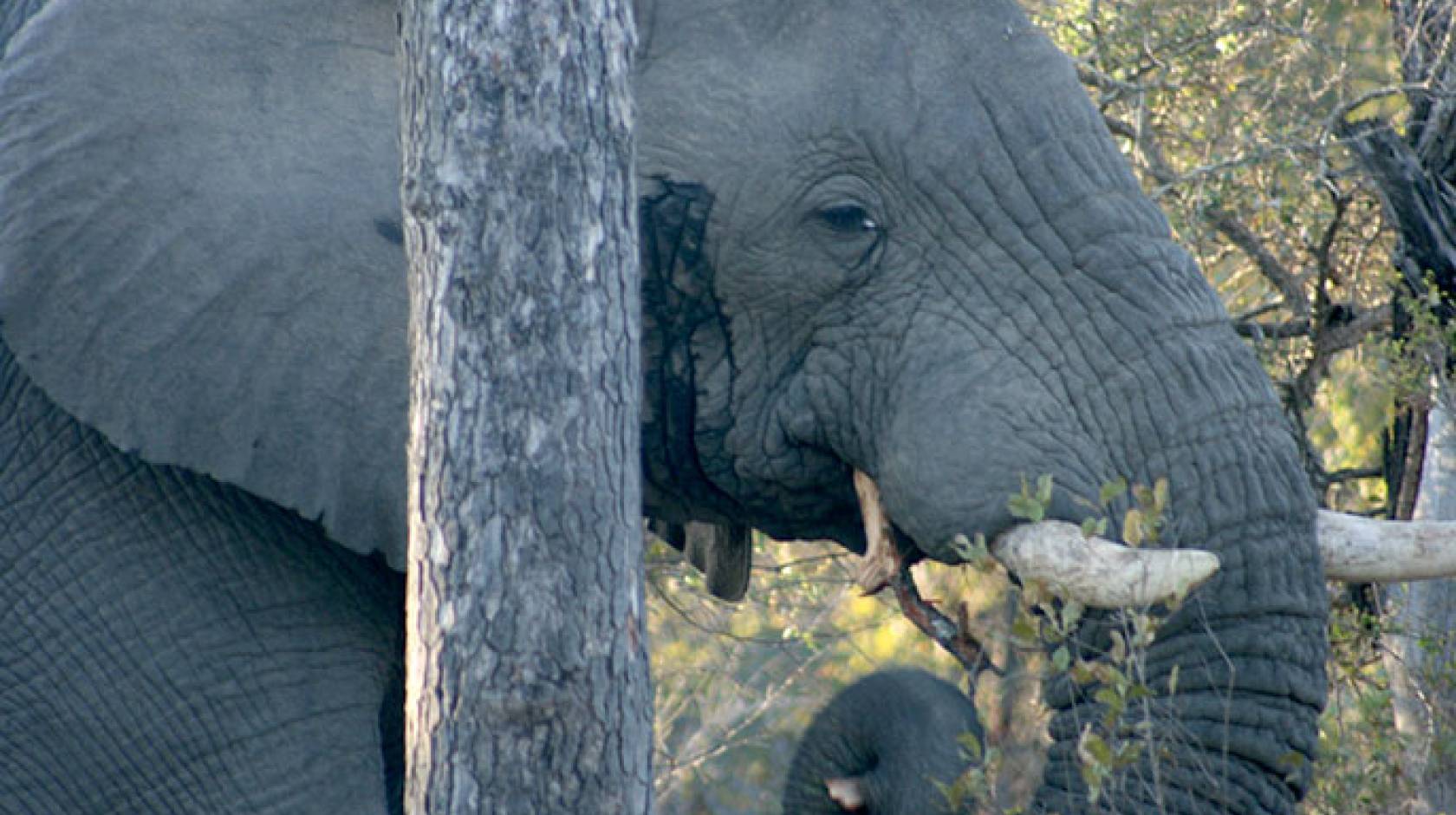Robert Sanders, UC Berkeley

Large land animals such as elephants, wildebeest and other big plant-eaters are worth preserving in part because their disappearance could have permanent effects on the plants and animals they coexist with, according to an analysis of past large-mammal extinctions in North and South America.
UC Berkeley paleontologists and colleagues at Stanford University, the University of Chile and California State University Sacramento investigated the ecosystem impacts of large animal, or megafauna, extinctions in the Americas since humans moved in about 15,000 years ago. They found long-lasting changes in the local landscape after the largest of the land animals — among them mammoths and mastodons — disappeared.
Recent studies, for example, point to the loss of mammoths, native horses and other large animals in Alaska and the Yukon as the reason a productive mix of forest and grassland turned into unproductive tundra that dominates the region today.
Similarly, mammoth and mastodon extinctions in the Pacific Northwest and the northeastern United States seemed to have changed the vegetation and, in the western United States, decreased the diversity of small mammals, said study leader Anthony Barnosky, a UC Berkeley professor of integrative biology.
“Ecological studies have shown that if you pull out a top predator or a key herbivore today, you get dramatic change in the ecosystem,” he said. “Our study makes it clear that in the past, such changes have lasted for thousands of years. These extinctions really do permanently change the dynamics. You can’t go back.”
Yet not all extinctions left major changes in the ecosystem, the researchers found. Ground sloth and glyptodont extinctions in South America had no noticeable effect on the vegetation of Patagonia and the Pampas, for example.
“It’s not a simple story, where if you pull out a big beast you see major changes in the landscape,” Barnosky said. “It’s actually dependent on how big a beast you pull out, and also how that beast interacts with the plants and animals in the area, and what other plants and animals are there. It depends on what the animal does for a living.”
Elephant browsers
Large browsers like mammoths, mastodons and today’s elephants, for example, eat small trees and shrubs and uproot or break down trees, as well as trample and churn the soil. Other large herbivores, such as bison and moose, also keep shrubs in check and change soil structure and nutrients as they feed, defecate and urinate. As a result, such large-bodied plant eaters play a key role in keeping forests from overrunning grasslands, as the group found happened in North America.

Credit: Anthony Barnosky
“You see the impact of defaunation today in Africa, where the removal of elephant populations has led to these shrubby, scraggly acacias filling the savanna landscape,” said co-author Charles Marshall, a professor of integrative biology and director of the UC Museum of Paleontology. “Africa today, with its elephant populations, seems to fit the model of North America with its mammoths and mastodons.”
In the Pampas of Argentina, however, the disappearance of the South American mastodon had no observable effect on the flora and fauna, probably because the weather and rainfall are not conducive to forests.
Understanding these relationships can be important today in targeting conservation efforts, said co-author Emily Lindsey, a UC Berkeley postdoctoral fellow.
“This information could be useful to conservation biologists in pinpointing which types of ecosystems are likely to be affected by global climate change, and which would be most responsive to conservation and restoration efforts,” she said.
Barnosky, Lindsey and their colleagues will publish their study this week in the online early edition of the journal Proceedings of the National Academy of Sciences.
Barnosky cautioned that the current study captures only the grossest environmental changes resulting from large-mammal extinctions, since not all ecosystem changes leave traces in the fossil record.
“The fact that we saw the impact we saw is a pretty robust conclusion that these ecosystems were changed forever by the disappearance of these animals,” he said. “Anytime you pull a big animal out of an ecosystem, there are some pretty huge effects, as demonstrated by ecologists today. But they might not be recognizable in the fossil record.”
Extinctions followed human invasion of New World
Barnosky said the current study was sparked by ecological studies today of the impacts of adding or subtracting large mammals such as deer and elk from American landscapes, or removing wildebeest and elephants in Africa. He and his colleagues decided to look for traces of ecosystem change resulting from the loss of about three-quarters of all large land mammals that roamed North and South America after humans arrived from Siberia about 15,000 years ago. About 60 large mammals died out in North America about 12,000 years ago, probably due to a combination of hunting and changing climate. Mammoths and mastodons, as well as horses, elk, moose and carnivores such as the saber tooth cat and the dire wolf, disappeared.
It took longer for South American species to go extinct, but the continent eventually lost about 99 species, including giant armadillos, saber-toothed cats, mastodon relatives called gomphotheres and two entire orders of endemic South American ungulates. The latter included the hippo-like Toxodonts in the order Notoungulata and the camel-like Macrauchenia in the order Litopterna.
In three areas of North America — northwestern and northeastern America and Alaska/Yukon — fossils showed not only a change in plant communities with an increase in fire frequency, but also a decrease in diversity of small mammals. A study conducted by co-author and Stanford University professor Elizabeth Hadly, for example, documented a decrease of small rodent diversity in California after these extinctions, allowing the most widespread “weedy” mouse species to dominate the landscape.
“The take-home message from western North America is that grazing and browsing by extinct megafauna such as proboscideans favored open-habitat mosaics,” Hadly said. “When these ecosystem engineers became extinct at the end of the Pleistocene, denser deciduous forests established. The loss of the mosaic Pleistocene habitats in western North America led to a decrease in the diversity of small mammals.”
“If we lose some of these big-bodied animals that are threatened with extinction today, we lose a lot more than those animals; we lose the entire ecosystems of which they are part,” Barnosky said. “We are moving into new territory in terms of what the planet will look like.”
Co-authors with Barnosky, Marshall, Hadly and Lindsey are UC Berkeley graduate student Natalia Villavicencio, Enrique Bostelmann of the University of Chile and James Wanket of California State University, Sacramento. The work was funded by the National Science Foundation (Earth Sciences Grant 1148181).

